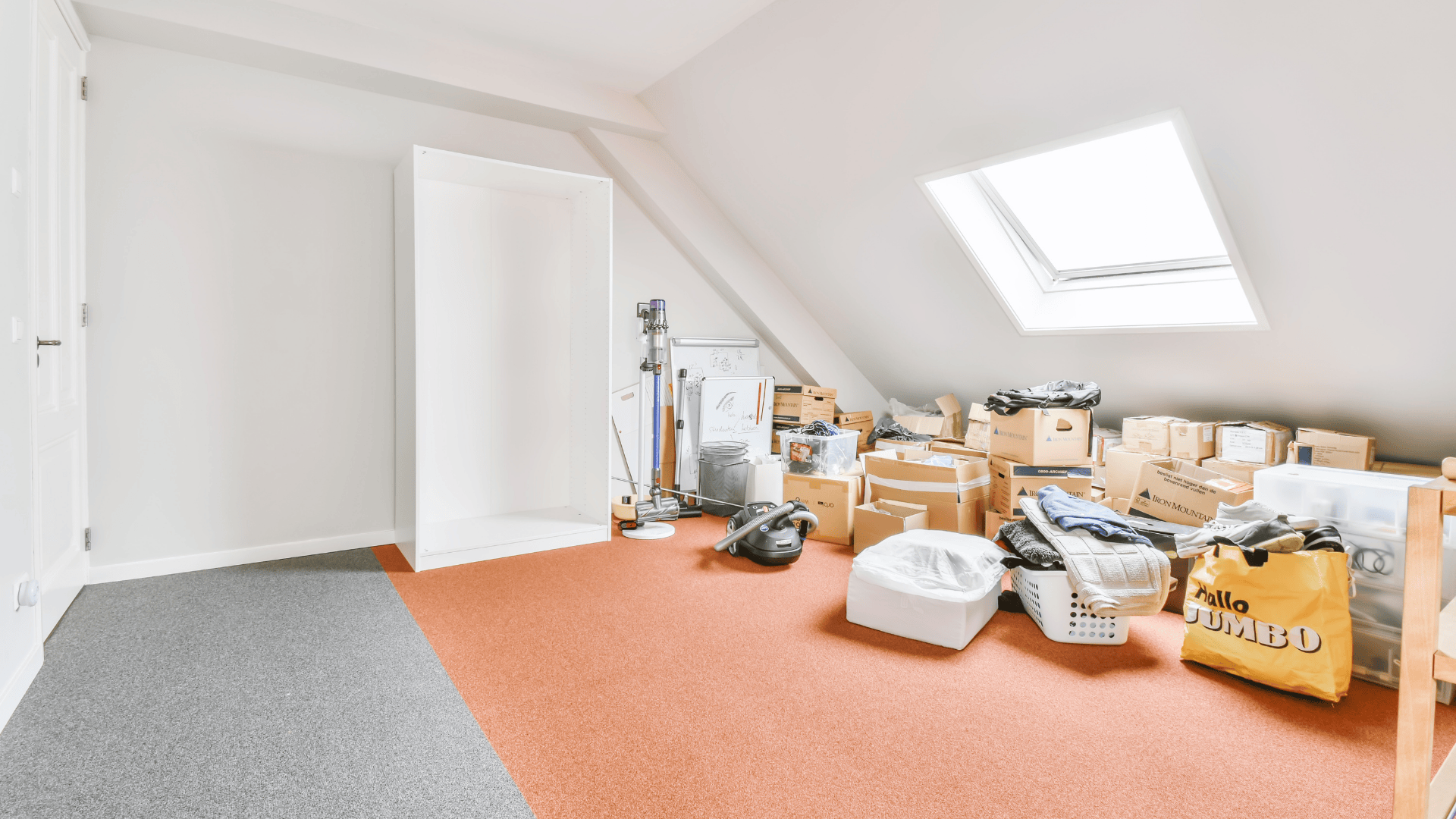Introduction:
Most homes are filled with items that seemed essential at the time—but now just sit unused, taking up valuable space. It is easy to underestimate how much room everyday items can occupy, especially when they blend into your surroundings over time. From closets packed with outdated clothes to kitchen drawers overflowing with gadgets, clutter often builds quietly until your home starts feeling cramped and disorganized.
Recognizing what’s really taking up room is the first step toward reclaiming control over your space. You do not have to live with constant clutter just because you use an item occasionally. There are smarter ways to store, sort, and still keep what you need. This article explores common household items that occupy more space than they deserve—and what you can do about them.

Unused Kitchen Appliances That Collect Dust and Counter Space:
Reassess What You Actually Use Each Week:
Many of us buy kitchen gadgets with the best intentions. That waffle maker, juicer, or air fryer might have sounded like a great idea, but if you are not using them weekly, they should not dominate your countertop. Even small appliances add up, stealing space and making kitchens harder to clean or cook in efficiently.
Take an honest inventory of what you use regularly. Place the less-used appliances in a cabinet or pantry, and if months go by without touching them, consider whether they still belong in your home.
Keep Only What Serves Multiple Functions:
Some appliances are one-trick ponies, while others are more versatile. Opt for items that serve multiple purposes—like a high-quality blender that also works as a food processor. Downsizing to multifunctional tools can reduce clutter and streamline your kitchen experience.
If you must keep certain items for occasional use, box them up and store them together in an accessible but out-of-the-way area. This keeps your daily workspace clear without sacrificing functionality.
Bulky Furniture That Does Not Match Your Lifestyle Anymore:
Identify What You Actually Sit On or Use Often:
Oversized sofas, unused side tables, and extra chairs from your last apartment might be making your home feel tighter than it needs to. We often keep furniture out of habit, not because it suits our current needs or space. If a piece hasn’t been used in months, ask yourself whether it’s adding comfort or just taking up square footage. The goal is not to empty your space, but to optimize it. Keeping only essential, well-used furniture can open up walkways, improve lighting, and give your home a more spacious feel. The same principle applies when choosing the right environment for personal growth—whether you’re creating space at home or signing up for dance classes Philadelphia, selecting what truly fits your lifestyle leads to better flow, energy, and clarity.
Swap for Space Saving Alternatives:
Consider modular or foldable furniture, especially in smaller living areas. Wall-mounted desks, nesting tables, and under-bed storage beds are excellent examples. They give you flexibility without cluttering the room when not in use.
A little creativity goes a long way. You do not have to live minimally—you just need furniture that works smarter for your space.
Seasonal Clothing and Shoes That Dominate Closets Year Round:
Create a Rotating System Based on Weather and Need:
Closets often hold far more than what you actually wear. Winter coats in July? Flip flops in December? Keeping seasonal items accessible year-round clogs up space and makes everyday dressing feel chaotic.
Instead, use a seasonal rotation system. Pack away out-of-season clothes in bins or under-bed containers, and refresh your closet every few months. This makes dressing easier and helps you appreciate the clothes you actually have.
Donate What You No Longer Love or Wear:
If you have not worn something in a year—or it no longer fits your style—it is time to let it go. Holding onto clothes “just in case” only adds weight to your closet and mind. Be ruthless in your sorting.
Quick checklist for purging:
- Have you worn it in the last 12 months?
- Does it fit and feel good?
- Would you buy it again today?
- If not, donate or recycle it.
Toys and Games That Are No Longer Age Appropriate:
Sort Based on Usage and Interest Not Sentiment:
Toys accumulate quickly—especially in homes with kids. But as children grow, interests change. Many parents hold onto toys thinking younger siblings might use them, but most of the time, they just gather dust in the corner of the room.
Sort toys by what your kids currently enjoy. Put everything else into a donation pile, sell it online, or pass it along to someone in your community. Keeping things age-appropriate makes it easier for your child to stay engaged and clean up.
Rotate Toys to Keep Playtime Fresh and Organized:
A smart trick is to store half of your child’s toys and rotate them monthly. This makes playtime more exciting, reduces mess, and helps you identify what gets used and what doesn’t. A few well-loved items beat shelves full of forgotten ones.
This also teaches kids that less can be more, and it keeps cleanup manageable for everyone.
Books Papers and Media That Are Rarely Touched:
Be Honest About What You Will Actually Revisit:
Bookshelves often carry emotional weight. We think we might re-read a book, or that it symbolizes who we once were. But the truth is, most books are read once and never touched again. Papers, manuals, and old DVDs also pile up faster than we realize.
Ask yourself: Would I seek this out again? If not, it is safe to donate, recycle, or digitize. Letting go does not mean devaluing knowledge—it means making room for what is current and useful.
Digitize When Possible and Create a Reference Box:
Scan important documents and store them securely in the cloud or on a hard drive. Create a labeled reference box for essential papers like passports, tax forms, and insurance documents.
Things to consider digitizing:
- Owner’s manuals
- Receipts and warranties
- Photos and personal letters
- Certificates and records
You’ll gain physical space while still holding onto the information.
Décor and Collectibles That Crowd Instead of Enhance Your Space:
Curate Instead of Displaying Everything:
Having décor you love is important—but when every surface is filled with souvenirs, picture frames, or collectibles, it can create visual noise. Display only what enhances your room, not what overwhelms it.
Try rotating your décor seasonally. This gives each item its own time to shine and keeps your space feeling fresh and intentional.
Find Better Homes for Items You No Longer Connect With:
Sometimes, gifts or travel mementos lose their connection to your current lifestyle. If it no longer brings you joy, consider passing it on. Local donation centers, resale shops, or family members might give your pieces new life.
Less clutter does not mean less personality—it means more clarity and balance.
Hobby Gear and Tools That Are Rarely Used or Outgrown:
Acknowledge Whether the Hobby Still Fits Your Life:
We all start hobbies with enthusiasm—crafting, biking, painting—but sometimes those interests fade. If you haven’t touched your supplies in over a year, it might be time to rethink their place in your home.
Hold onto the basics if you plan to return, but avoid letting your storage become a museum of past hobbies. Make room for what still excites you.
Store Bulky Gear Offsite for Occasional Use:
Some items are just too big to store comfortably at home—camping tents, skis, or backup equipment. Instead of cramming them into closets or hallways, consider placing them in a los angeles storage locker. These offsite solutions let you hold onto what you still use occasionally without letting it dominate your daily space.
It’s a smart way to balance flexibility with function—without losing touch with what you enjoy.
Duplicates and Extras That Serve No Clear Purpose:
Know When Enough Is Enough for Each Category:
Most households contain duplicates—extra towels, utensils, chargers, or bedding. While backups can be useful, having three or four of everything becomes unnecessary fast. Start by identifying which items have extras and determine what’s truly helpful versus what’s just in the way.
Common duplicates to declutter:
- Kitchen tools (measuring cups, ladles)
- Electronics (charging cords, remote controls)
- Bedding and linens
- Water bottles and coffee mugs
Once you pare down, you’ll wonder why you ever needed so many.
Create a Backup Bin Instead of Keeping Extras Everywhere:
Instead of scattering extras throughout your home, keep one designated bin with useful backups. Label it and revisit every few months to see what you’ve used or forgotten. This keeps your home tidy and makes it easy to find things when you do need them.
A single bin of spares is more useful than drawers full of excess.
Conclusion:
The truth is, many of the items filling our homes are just everyday things that have overstayed their welcome. When left unchecked, they take over closets, drawers, floors, and even our mental space. But by recognizing what you truly use, need, and love, you can take back control without losing comfort or function.
It’s not about living with nothing—it’s about living with intention. Small changes lead to big shifts. Start with one category, one drawer, or one shelf. Before long, you’ll feel the difference a more spacious, organized home can make.

Founder Dinis Guarda
IntelligentHQ Your New Business Network.
IntelligentHQ is a Business network and an expert source for finance, capital markets and intelligence for thousands of global business professionals, startups, and companies.
We exist at the point of intersection between technology, social media, finance and innovation.
IntelligentHQ leverages innovation and scale of social digital technology, analytics, news, and distribution to create an unparalleled, full digital medium and social business networks spectrum.
IntelligentHQ is working hard, to become a trusted, and indispensable source of business news and analytics, within financial services and its associated supply chains and ecosystems










